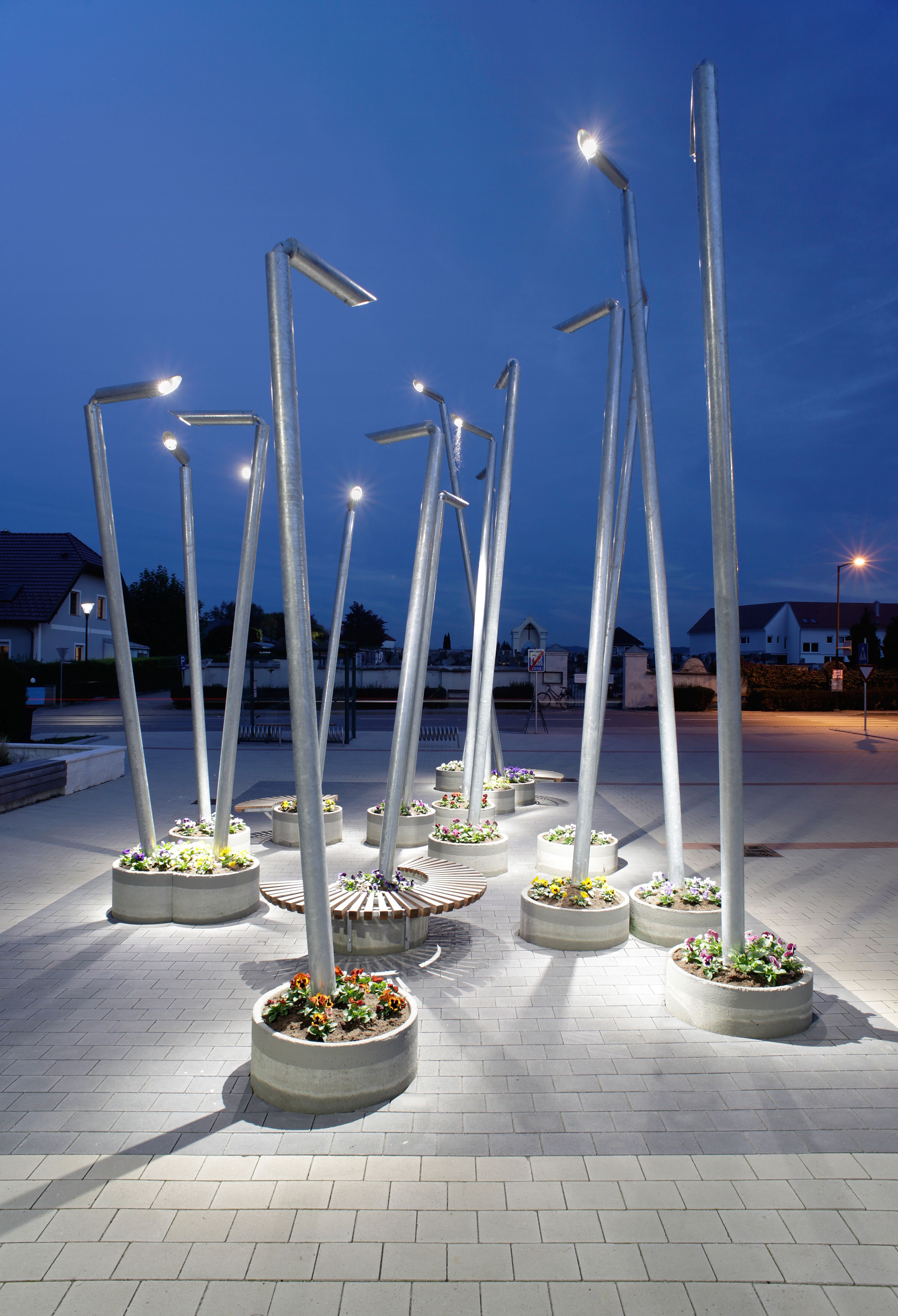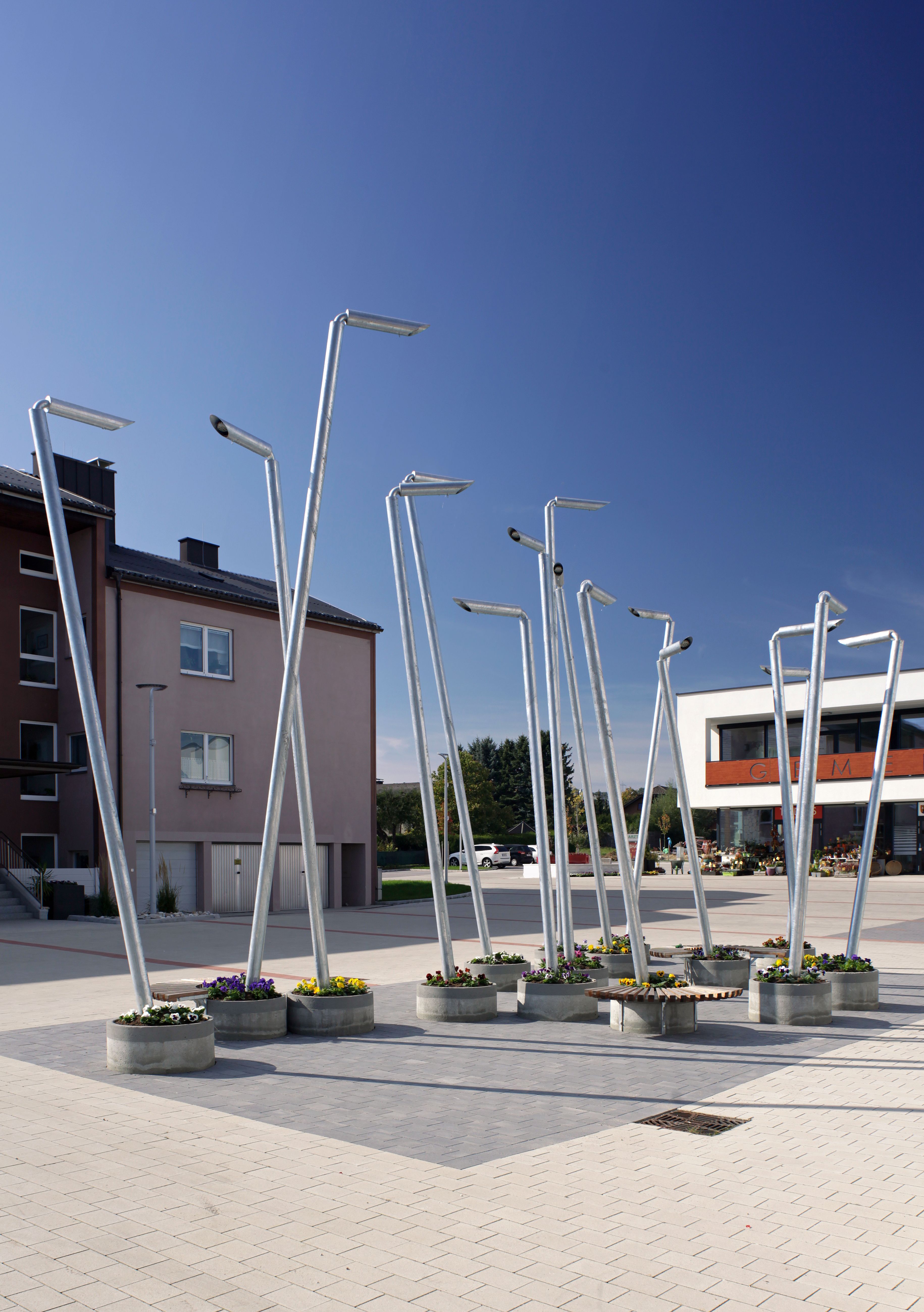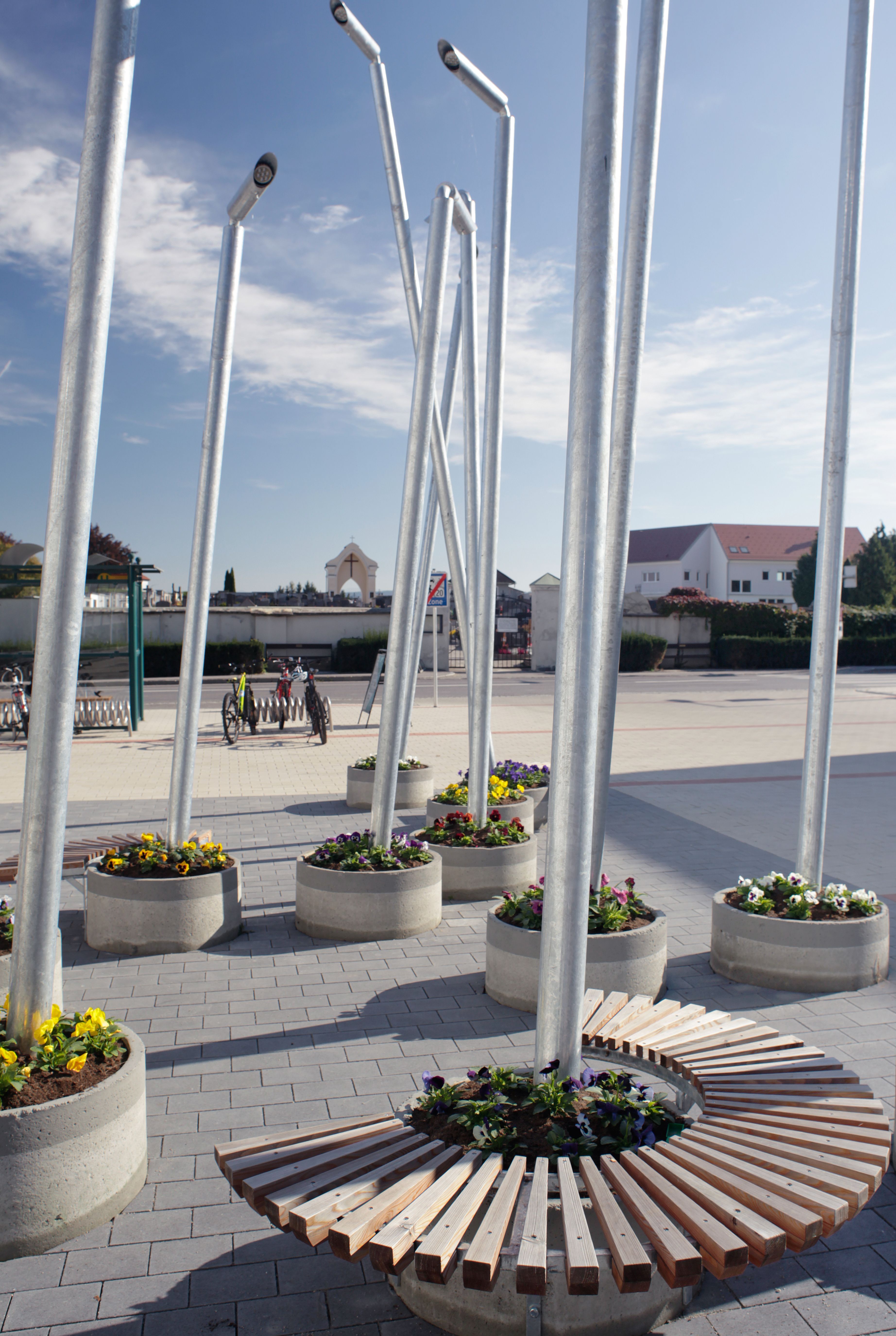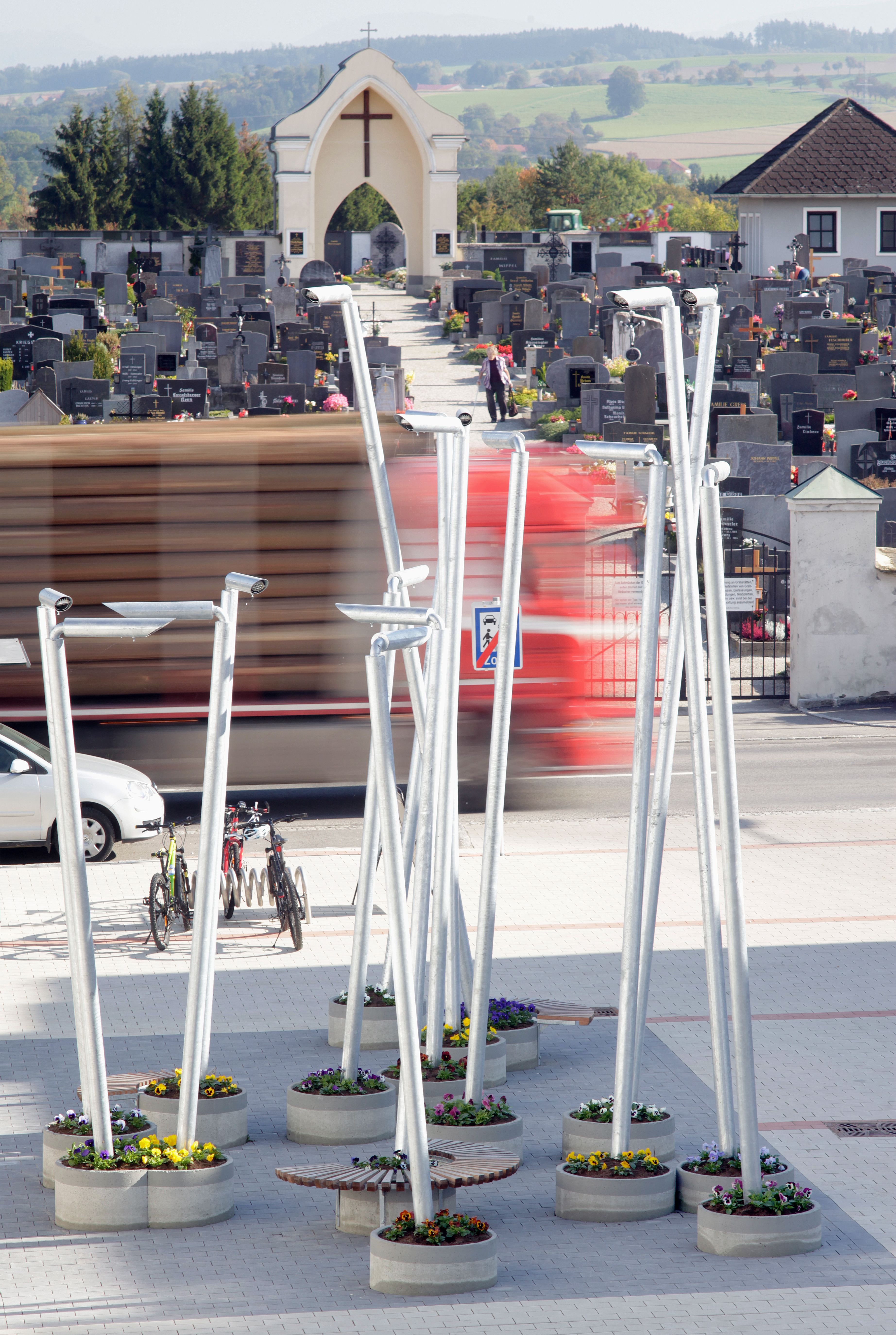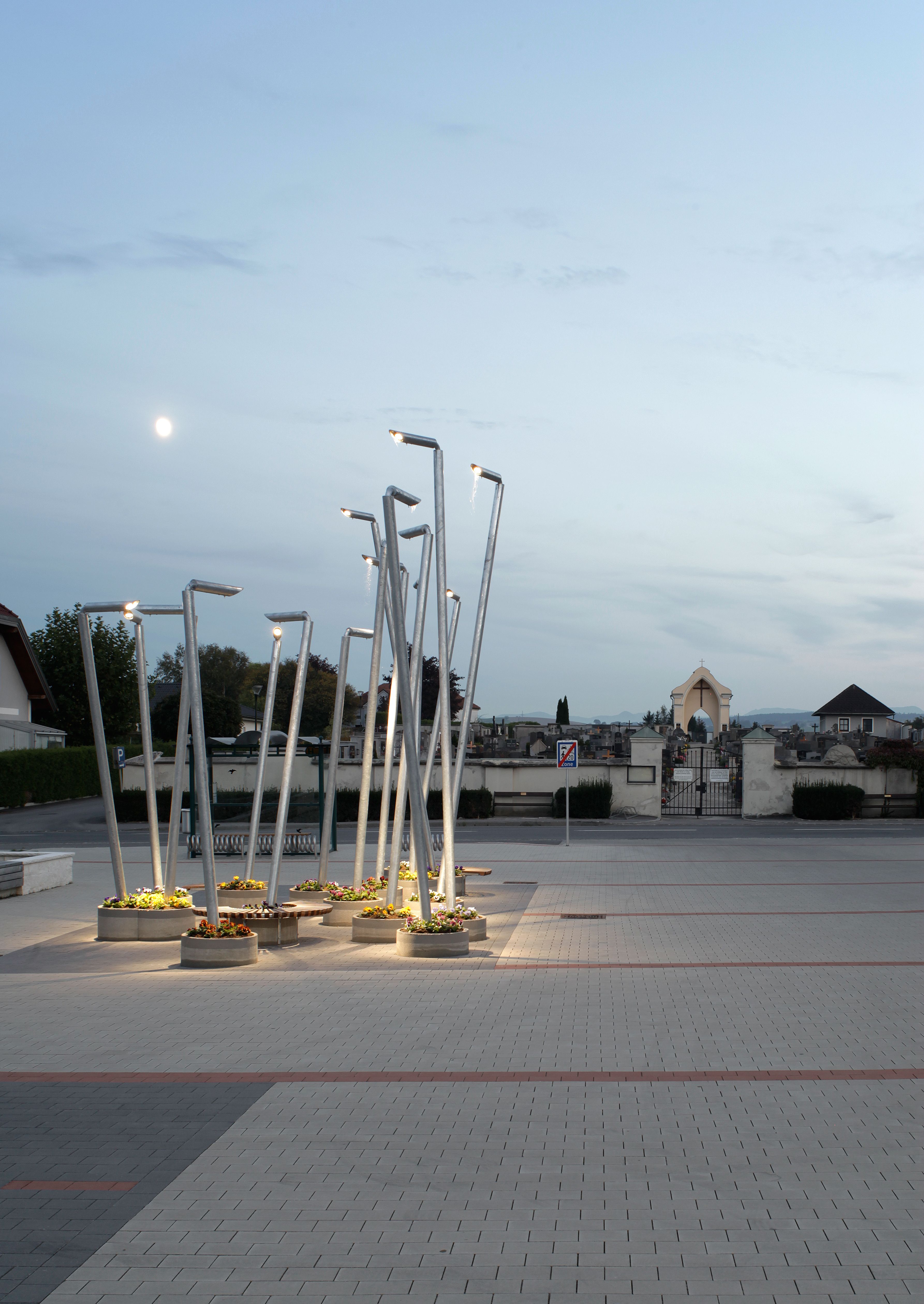Irena Eden
:
Ursa Major
Back
Information
After the small community of Petzenkirchen, which is located near the town of Melk, remodeled its community center, the community decided that the main square could use a new design as well. They came up with idea to create a recognizable landmark that would reflect the village’s identity, while referring to its name and hence its origin.
A legend in Petzenkirchen says that a knight once swore that he would build a church if he managed to survive an encounter with a bear in a forest nearby unharmed ( Petz is the name of a bear in a fairy tale and kirchen means “church”). However, the name of the town can probably be traced back to the congregation’s founder, Bishop Berengar, who transformed the town into an influential parish in 1014. [1] With their installation Ursa Major , Irena Eden and Stijn Lernout refer to the constellation of the Big Dipper (or the Great Bear) in their project intended to create a communicative space that the community can also identify with. In their work, the constellation Ursa Major is projected onto the newly remodeled main square using 16 complex light columns that they developed together with light specialists. [2] This way, they create a visible connection between this small town in Lower Austria and the macrocosm. Far from indulging in pathos, the result seems gently poetic. The installation consists of metal tubes that are somewhere between four and six meters high. All stand at a slight angle, resembling other spatial structures the artist duo have produced in the past. When the sun goes down, the tilted upper ends of the tubes cast beams of light onto the square that mark the stars that shape the constellation. The light is cool and clearly defined in analogy to the electromagnetic radiation of the stars in the Ursa Major constellation, which serves as an important point of orientation for localizing the North Star in the Central European night sky.
What from a distance by day looks like a spatial drawing in the air is actually the result of many precise calculations. The constellation was first transferred to a field 5x10 meters in size, then flattened on a grid, and finally projected back into the third dimension to define the exact positions of the lights. This process of projection and re-projection is a prime example of how Eden and Lernout prefer to use many different methods. In their works, the two artistic poles of abstraction and communicative practice act as cornerstones of a reflexive system revolving around measuring and transferring. This reflexivity is also apparent in their installation in Petzenkirchen in the double projection that is both method and theme at the same time. The base of each light column is embedded in a concrete circle in which herbs are growing. Attached to three of the light beams are also radial benches that face the main access points of the square. In their exploration of how certain spaces evolve in their works, Irena Eden and Stijn Lernout regard space as a geographic, physical, and naturally a societal idea. As in many of their projects, the installation Ursa Major therefore not only refers to the story of the town’s origin; it is also creates an active space that opens up many opportunities to communicate. As the artists once said, “Establishing this and making the square come alive with and for people is one of the fundamental ideas of the design.”
(Cornelia Offergeld)
[1] The name Berengar comes from the Old German bero (“bear”) + ger (“spear”).
[2] Ursa Major is Latin for a large female bear.
Images (6)
